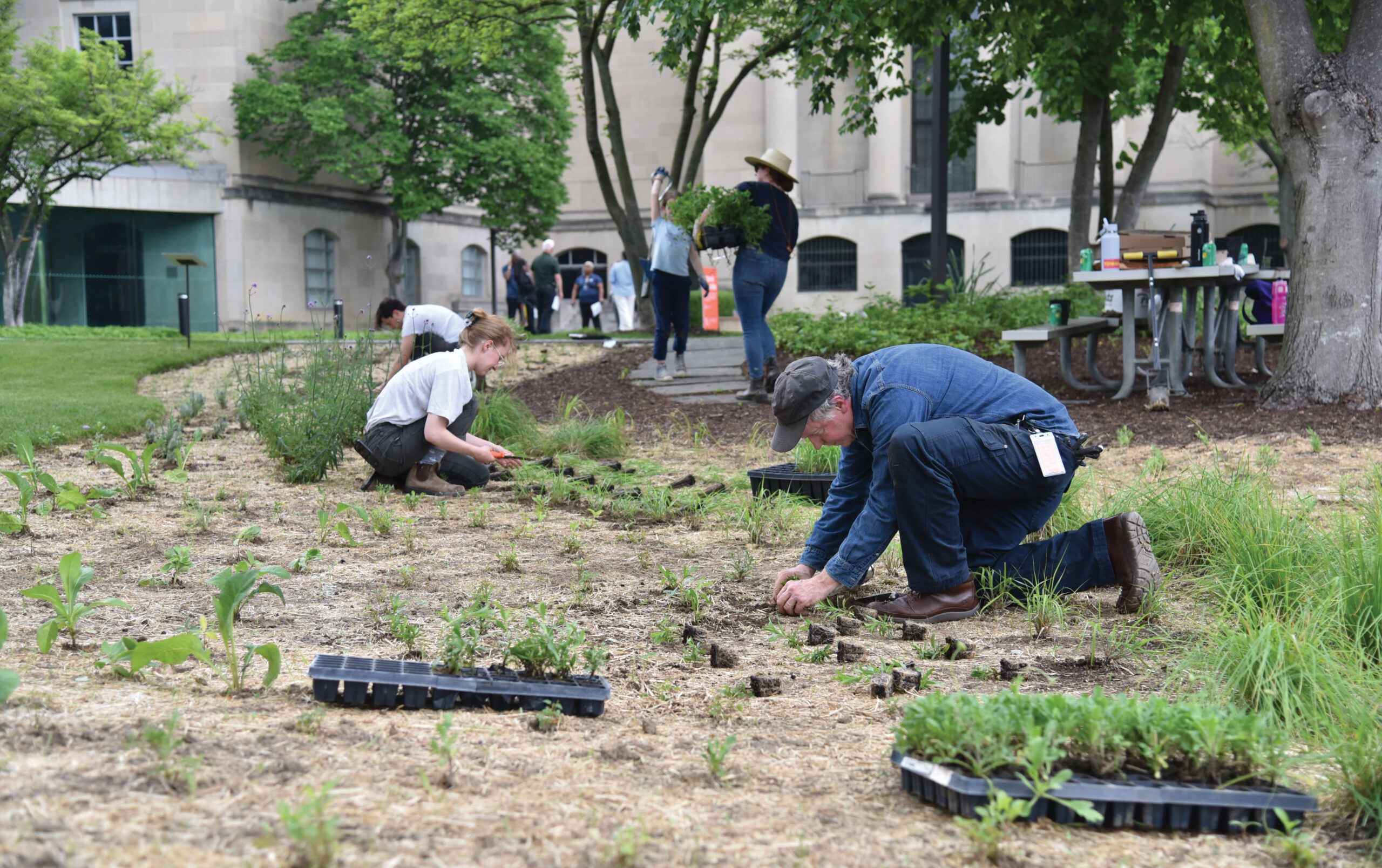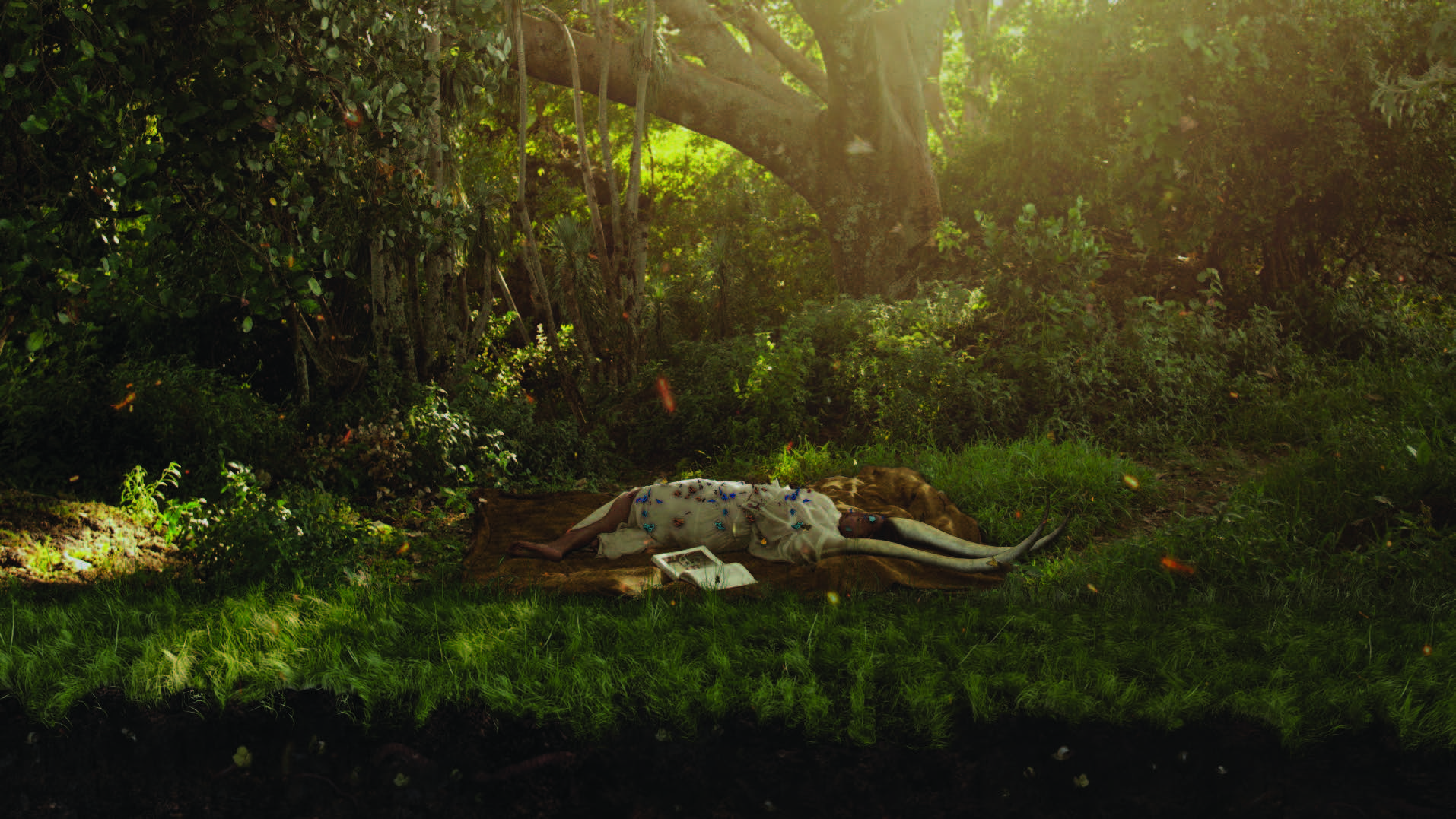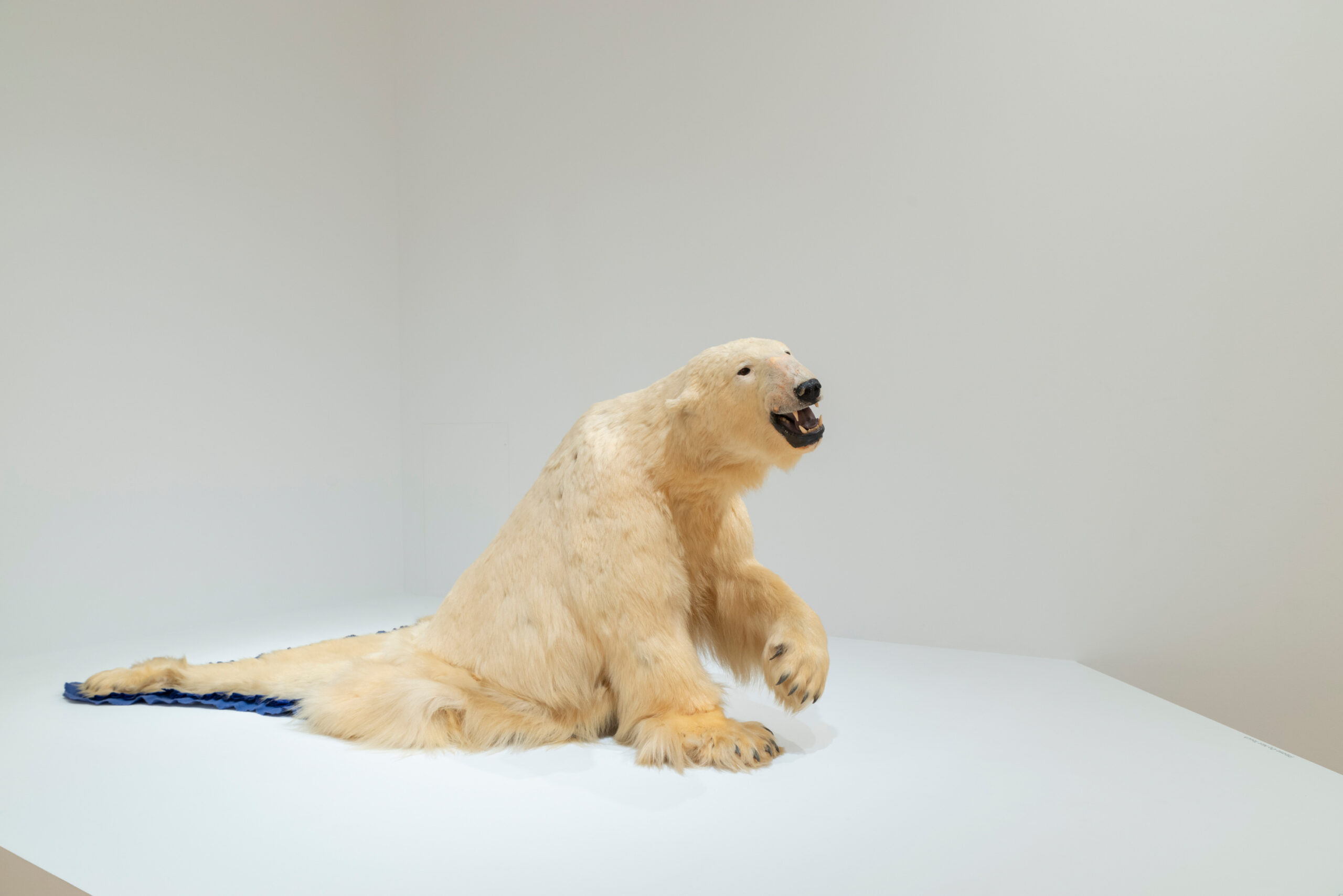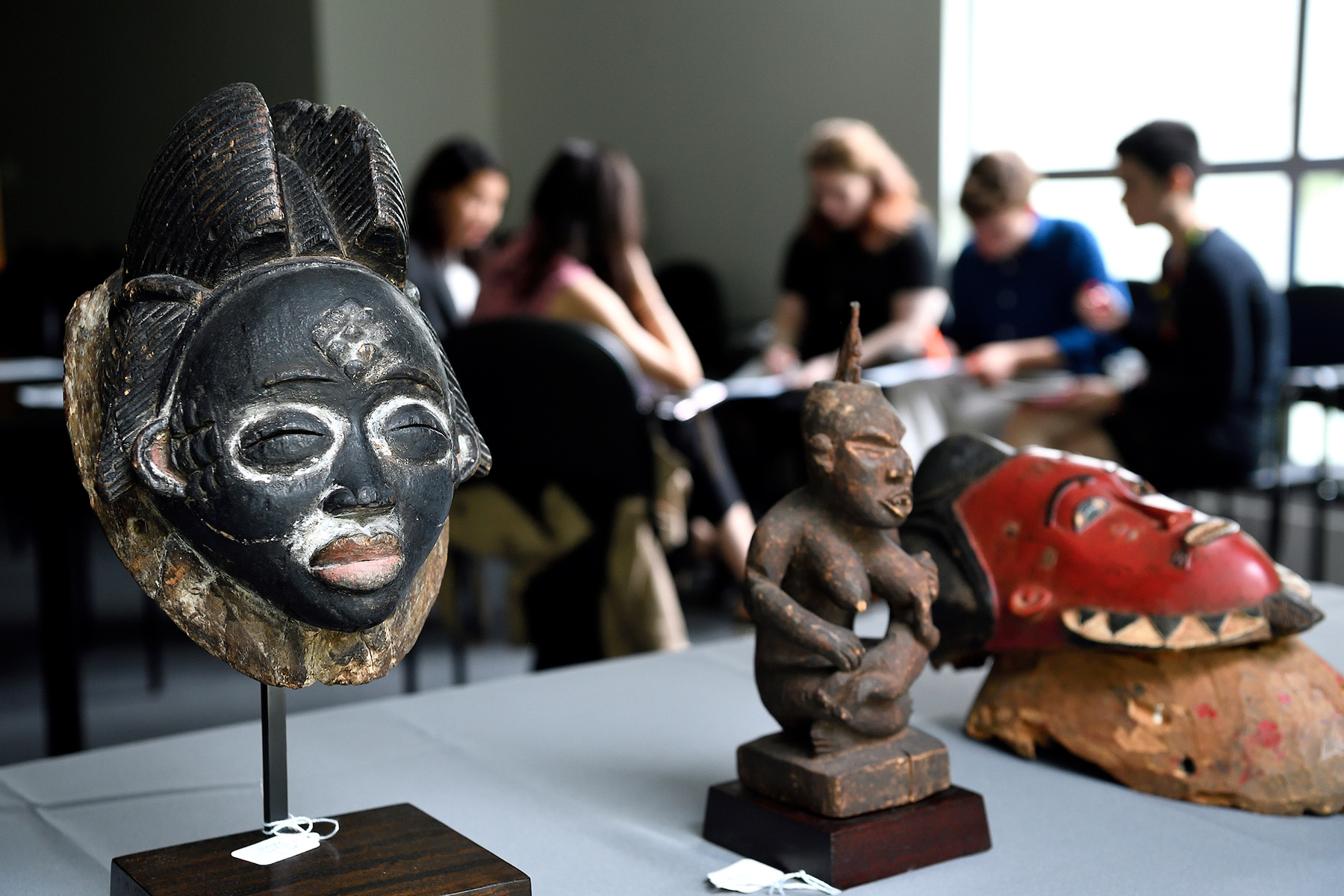
The Next Generation of Arts Professionals Explore the Answer in A Perfect Power: Motherhood and African Art
In the matrilineal societies of Central Africa in the 1800s and early 1900s, when kinship was traced through the maternal line, mothers were credited not only with creating life and nurturing families, but protecting communities, strengthening leaders, and enforcing social order. Through the curve of a pregnant belly or a bold gaze that meets your eye, artists in matrilineal societies incorporated maternal imagery onto a range of objects associated with status to signal African mothers’ moral, cultural, and spiritual authority.
Nearly 40 of these objects are featured in A Perfect Power that was born from an innovative curatorial collaboration between BMA staff, undergraduate students at Johns Hopkins University and Goucher College, and professors at Johns Hopkins University and Stony Brook University.
As the exhibition prepared to open, three of the students who worked on the show—Michael Harper, Debbie Kim, and Clara Leverenz—sat down with Dr. Kevin Tervala, the BMA’s Associate Curator of African Art and Department Head for the Arts of Africa, the Americas, Asia, and the Pacific Islands. An excerpt of their conversation discusses the process of curating A Perfect Power and what the students saw as the exhibition’s most important message.
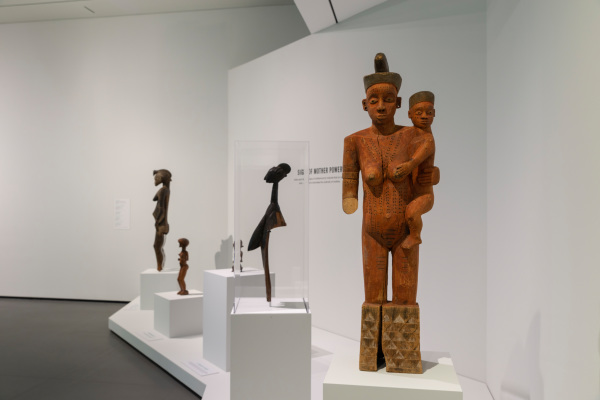
Can you describe the process of translating academic and theoretical knowledge into exhibition form?
Debbie Kim: None of us really had that much of a background in African art; we were coming to the material fresh. That allowed us to really empathize with the situation that many members of the public were in. It allowed us to develop an exhibition that walked people through the arguments and the artworks in a very clear manner, one that mirrored the way that we approached the material.
Clara Leverenz: Exactly! One exercise that we did in class was to try to explain the crux of the exhibition to family or friends, and I remember one of our classmates, Andrea White, talking about the experience of explaining the exhibition to her dad. She told us the things he was confused about, and things that he likes in the museum, and things that he needs in order to understand certain exhibits. I think this informal visitor testing was really helpful to us.
The exhibition revolves around the concept of Mother Power. Can you explain what Mother Power is and what it means to you?
Michael Harper: For me, Mother Power is about situating the power of women in their role as mothers. And I also think Mother Power is really about making the claim that, in African matrilineal societies, the very idea of power is gendered. And that it is gendered as female.
Clara Leverenz: That idea builds off a lot of the theoretical work we read in class. One of the most important to understand about this idea of Mother Power is that it helps us situate these objects within their original context and within the context of the feminism and gender theory that comes out of the different African regions that we were looking at and studying during our course. I remember one reading that really stuck out to me—Obioma Nnaemeka’s “Mapping African Feminisms”—talked about the differences between African and Western feminisms. I remember another reading—Oyeronke Oyewumi’s “Family Bonds/Conceptual Binds: African Notes on Feminist Epistemologies”—saying that the woman at the core of Western feminism is always a wife and the woman at the core of African feminism is traditionally a mother. These were really helpful in developing our idea of Mother Power because we needed to rethink what we meant by the term feminism.
Debbie Kim: To add to what both of you said, I see Mother Power as being about the fact that mothers aren’t given their power by anyone. They’re born with it, it is embodied. And actually, as we explain in the show, that power is one that other people want. Men want to use Mother Power.
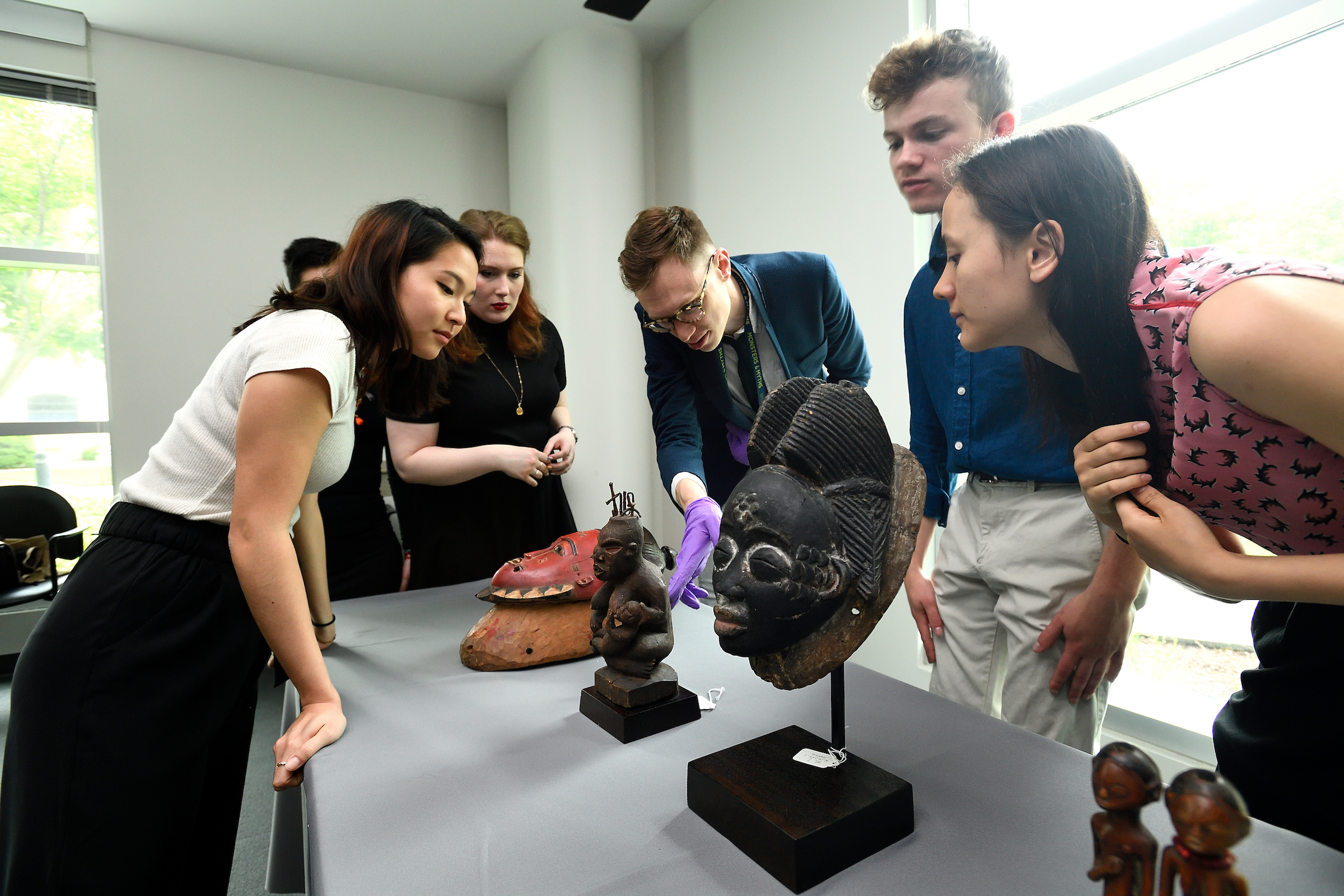
One of the things we did in class was draft visitor outcomes for the exhibition, that is to say we came up with the main takeaways we wanted people to remember about the exhibition. Of those, which was the most important to you?
Clara Leverenz: For me, it would be to respect the plurality of different feminisms. I think that is very important because everyone has been saying 2020 is the Centennial of Women’s Suffrage here in the United States. So it’s a big year in the U.S. for celebrating a big event or big moment in Western feminism, but there are obviously very different challenges that people in other continents or even other regions face. So their feminisms obviously are adapting or reflecting on those challenges. I don’t think that those should be dismissed or seen as less than or at a different, lesser stage. So just kind of respect the plurality of places, different people are in. I feel very strongly about that.
Debbie Kim: So for me, one of the most important things was to get exposed to African art and appreciate it in a different way than they might not have previously. Usually, when you go into an African art gallery, you see a pretty standard geographical arrangement of works. But I think what we were trying to do with this show was deepen the stories that were being told. Yes, these works come for a specific geographical area, but they are all connected by this one unifying concept: Mother Power.
Michael Harper: I actually have another goal that’s kind of talking about what Debbie’s talking about. It’s for the visitors to see the works that we’re putting on a display of African art as modern as well. I think that we’ve worked really hard to think about how to show that these pre-colonial and early colonial works are actually coming from the same time period as works in the Cone Collection … So I really hope that people see that all the design work that has been put into this exhibit, as well.
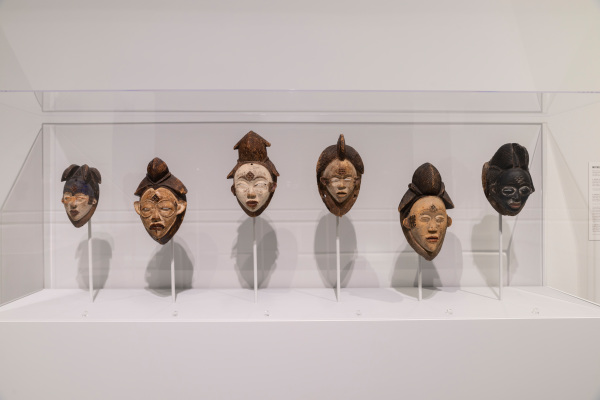
One last question: What is your favorite work in the show?
Michael Harper: I spent a lot of time looking into Punu masking traditions. And I was really interested in the ways that these white-faced masked, which represent a female ancestor, channel Mother Power but are performed by men.
Clara Leverenz : I did research on Luba art from today’s Democratic Republic of the Congo, and the works I most love are the ones that demonstrate the ways that mothers are holding male leaders. The first one that comes to mind is a headrest. I also think about the stool or throne. This would be a seat of power, but it has a woman literally holding up the male leader sitting on it.
Debbie Kim: I love the Chokwe prestige chair that prominent features a carving of a female ancestor mask called Mwana Pwo. What’s great about this chair, and it goes back to what you were saying, Clara, is that it would be used by a male ruler, but it’s still calling back to the primacy of the mother and of the female ancestor.
The BMA is temporarily closed to help stop the spread of COVID-19. Visit artbma.org for updates.


